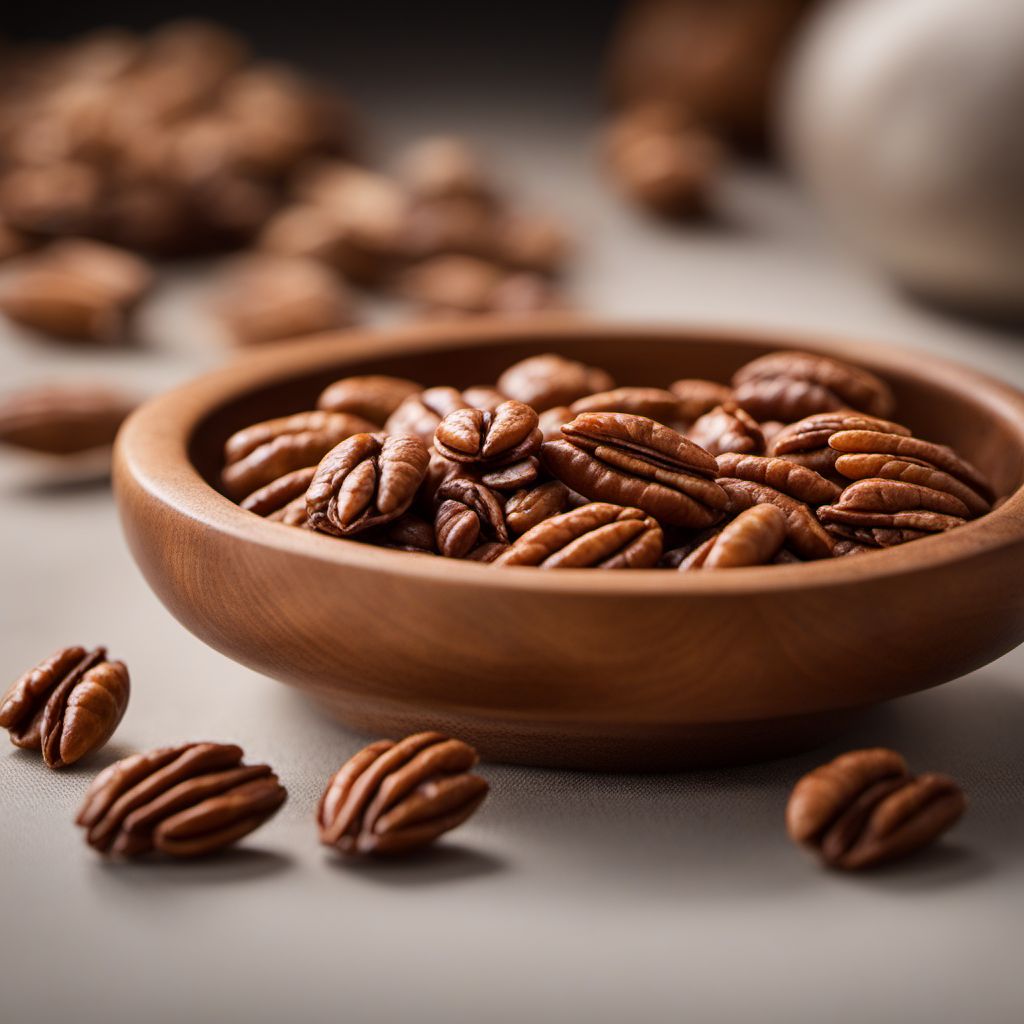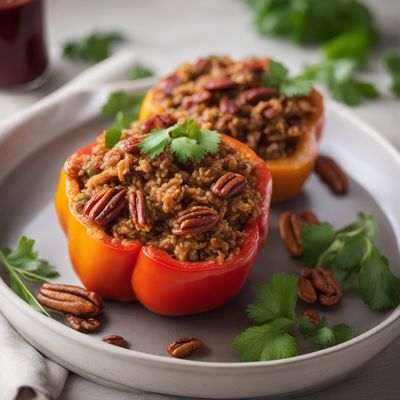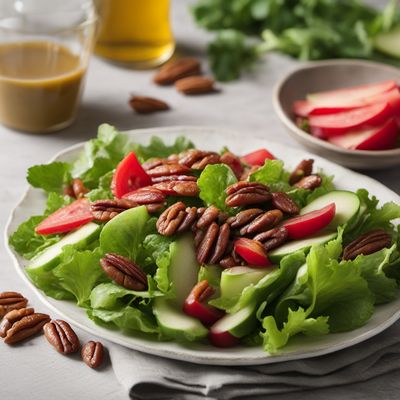
Ingredient
Pecans
The Nutty Delight
Pecans are characterized by their smooth, oval shape and light brown color. They have a buttery, slightly sweet taste with a rich, nutty flavor. The texture is firm yet tender, and they offer a satisfying crunch when eaten. Pecans are commonly used in baking, as a topping for salads or desserts, or enjoyed on their own as a snack.
Origins and history
Pecans are native to North America and have been an important food source for Native American tribes for centuries. They were introduced to European settlers by Native Americans and have since become a staple in Southern cuisine. Pecans are now primarily grown in the southern United States, with Texas, Georgia, and New Mexico being the largest producers.
Nutritional information
Pecans are a nutrient-dense food, packed with healthy fats, fiber, and various vitamins and minerals. They are a good source of monounsaturated fats, which can help reduce bad cholesterol levels. Pecans also contain antioxidants, such as vitamin E, which can protect against cell damage and inflammation. Additionally, they provide important minerals like manganese and copper.
Allergens
Pecans may cause allergic reactions in individuals with tree nut allergies.
How to select
When selecting pecans, look for ones that are plump, with a uniform color and smooth surface. Avoid pecans that have a rancid or bitter smell, as this may indicate they are past their prime. If possible, choose pecans that are still in their shells, as this helps protect their freshness. Additionally, opt for organic or locally sourced pecans to support sustainable farming practices and ensure the highest quality.
Storage recommendations
To maintain the freshness of pecans, store them in an airtight container in a cool, dry place, such as the refrigerator or freezer. This helps prevent them from becoming rancid or absorbing odors from other foods. Pecans can last up to six months in the refrigerator and up to a year in the freezer.
How to produce
Pecans can be grown in regions with a suitable climate, such as the southern United States. They require well-drained soil and full sun exposure. While it may take several years for a pecan tree to start producing nuts, it can be a rewarding experience for home gardeners.
Preparation tips
Pecans can be enjoyed in various ways. They can be roasted and seasoned with spices for a flavorful snack, used as a topping for salads or oatmeal, or incorporated into baked goods like pies, cookies, and bread. Pecans can also be ground into a fine powder and used as a gluten-free alternative to flour in certain recipes.
Substitutions
Walnuts, almonds, or cashews can be used as substitutes for pecans in recipes. However, keep in mind that each nut has its own unique flavor and texture, so the final result may vary slightly.
Culinary uses
Pecans are commonly used in both sweet and savory dishes. They are a popular ingredient in pecan pies, pralines, and other desserts. Pecans can also be added to salads, roasted vegetables, or used as a crust for meats or fish. In Southern cuisine, pecans are often featured in dishes like pecan-crusted catfish or sweet potato casserole.
Availability
Pecans are primarily cultivated in the southern United States, particularly in states like Texas, Georgia, and New Mexico. They are also grown in other regions with a suitable climate, such as Mexico and South Africa.
More ingredients from this category
Recipes using Pecans » Browse all

Divine Delights
Heavenly Clouds: A Sweet Delight from America

Louisiana Creole Montebianco (Mont Blanc)
Bayou Delight: Louisiana Creole Montebianco

Texan-style Pecan Şöbiyet
Pecan-filled Sweet Delight: Texan Twist on Şöbiyet

Peruvian-Inspired Chocolate Chip Cookie Recipe
Choco-Chip Alfajores: A Peruvian Twist on a Classic American Treat

Louisiana Creole Rice Pudding Pie
Creole Comfort: Louisiana Rice Pudding Pie with a Southern Twist

Loukoumi Geroskipou with a New Jersey Twist
Jersey-Style Loukoumi: A Sweet Delight with a Local Flair

Lane Cake Recipe
Southern Delight Cake: A Sweet Symphony of Flavors

St. Louis Style Stuffed Peppers
Gateway to Flavor: Stuffed Peppers with a Twist

Cuban Chocolate Chip Cookie Recipe
Havana Delight: Cuban-Inspired Chocolate Chip Cookies

Lowcountry Kunāfah
Southern Charm Kunāfah

Southern Style Ravioli with Pesto Sauce
Savory Pesto Ravioli with a Southern Twist

Canadian Maple Salad
Maple-infused Canadian Salad Delight